
Think about the issue from your dog’s point of view if they won’t go for a walk with you while on a leash.

If your dog refuses to walk on a leash, consider things from their perspective. Why doesn’t he find walks enjoyable?
First, rule out any physical issues. Do his nails grow too long? He can have painful muscles, inflamed skin between his toes, or arthritis that makes it difficult for him to walk. To be sure, take your pet for a veterinary examination. Ask your veterinarian about the possibility of pain medication if your dog is an elderly dog with arthritis.
Examine how well his harness fits him; if not, try a different one or just use his flat collar.
Make sure the area you’re strolling on is pleasant for him; avoid hot concrete, rough grass, and steep inclines. Are his paws too cold if it’s cold outside? Some dogs try to elevate all four feet off the ground by practically sitting on their hindquarters. Some people stutter.
To make your dog more excited about going for walks, keep in mind:
Let’s now increase his enthusiasm for walks and the leash.
Say “Leash!” as you pick up the leash and place it on him. Present him with a treat right away. Next, use a fresh cue (one that you haven’t used previously) and invite him to accompany you on a walk around your home or yard. Saying “Walk,” “OK,” or “Let’s go!” is OK. It is irrelevant. It matters that you say it in a lighthearted, joyful manner and give him a reward as soon as he follows your lead. Give him rewards all the time. Limit the duration of sessions to three to five minutes. You might have noticed by now that he keeps staring up at you as he walks along.
Take him for a quick walk somewhere fresh when you think he’s ready. Along the way, spoil him with lots of sweets. Use a very high rate of reinforcement (treats and praise) as you approach and pass the hurdle if you believe that something up ahead might annoy him. When he comes to you with a worry, eventually he will look at you like you’re a pleasure.
Walks should be gradually extended, but if your dog starts to show signs of reluctance after you’ve taken care of his equipment and health concerns, cut down on the distance and honor his boundaries! Not every dog has to walk long distances to be happy or healthy.
If you are interested in one of our Posh Dog Knee Brace you can contact us via our contact page or check us out on Facebook.
People sometimes assume that a dog isn’t in pain if it isn’t screaming out or whining. However, a limp is a clear indication of pain and a warning that your dog is unwilling to bear weight on the injured leg.
Dogs are typically energetic, active members of the family, which makes them prone to accidents. These can include systemic infections, fractured bones, and strained muscles.
If your dog is limping, it’s time to take him to the vet. Depending on how serious the issue is, they might want you to keep an eye on your dog at home for 24 to 48 hours while you rest him. If your limp doesn’t get better or gets worse, they’ll probably want you to make an appointment.
It is crucial to keep in mind that in this situation, over-the-counter pain relievers should not be used. Dogs can safely take aspirin and acetaminophen (Tylenol), but overdosing can cause bleeding issues and liver failure. Do not take these drugs without first talking to your veterinarian.

To find out why your dog limps, the veterinarian must perform a complete physical examination. An examination from head to toe should involve taking your dog’s vital signs, feeling its lymph nodes, listening to its heart and lungs, manipulating the achy limb, and watching it while it walks. In order to identify potential reasons, it is critical to identify which limb and which part of the limb is afflicted.
Dog limping has a very wide range of causes. Infectious ailments like Ehrlichia and Lyme disease, inflammatory disorders like panosteitis, vascular disorders like blood clots, and orthopedic issues like fractures are some of the broad categories that encompass soft tissue strains or rips (ligaments, tendons, and muscles). These can be further separated into front and back limbs. A torn cranial cruciate ligament is one particular issue that can only occur in the back limb, however the majority of lameness issues are comparable in the front and back legs.
With a history and your dog’s age and breed, you can frequently determine the triggering cause (this is called the signalment). For example, panosteitis, a typical inflammatory illness of the breed, would be a strong suspect in a German shepherd puppy with acute onset of shifting leg lameness. If an elderly dog suddenly became lame in one leg and could not bear any weight, this could be a sign of a bone malignancy such as osteosarcoma and a fractured bone. Rocky Mountain spotted fever, a common tick-borne infection, could be the cause of a young limping Coonhound with a history of tick exposure, fever, and abnormalities on bloodwork.
Your veterinarian may offer a variety of tests, such as bloodwork, tick disease testing, and/or x-rays, depending on what they discover. The optimal course of treatment will also be decided by them.
Additionally, your veterinarian will advise resting your dog. There won’t be much exercise involved—leash walks will only be taken to use the restroom. Icing or using heat can be helpful in certain situations. The cause determines the appropriate course of action.
Consult your veterinarian right away if your dog starts to limp, give them some rest so they can heal, and refrain from giving them over-the-counter medication without first talking to them. There are many different reasons why dogs limp, and your veterinarian should be able to assist your dog based on a comprehensive medical history and physical examination.
If you are interested in more information or would like to know more about our Posh Dog Knee Brace you can contact us via our contact form or visit us on Facebook.
For your dog, which is preferable—a dog collar or a harness? Most of it is dog-specific! The degree to which the equipment fits your dog will depend on a number of factors, including its design, fit, introduction, and usage.
There are a ton of dog collar and harness options available, along with a ton of contradicting information when contrasting dog collars and harnesses! Which is better for your adult dog or your puppy? How can you tell? Although the response is “it depends,” the following tips will assist you in selecting the ideal equipment for your dog.

Choosing which dog collars or harnesses to discard is the easiest part of the process. Any device intended to inflict pain or suffering on your dog is not eligible for consideration. This includes prong and choke collars, shock collars (marketed euphemistically as “e-collars”), and harnesses that tighten around your dog’s barrel, called “no-pulls.” Never listen to someone who claims these aren’t unpleasant. They are, and that’s how they use pain to manipulate the dog.
We would much rather teach dogs how to behave properly when walking than simply punish them for pulling or other undesirable behavior.
Next, even if the equipment isn’t made or meant to be unpleasant, we advise against giving it to your dog. It will be challenging to get your dog to willingly learn and comply with you if you employ equipment that they obviously detests.
When presented with some things, like head halters, most dogs find them repulsive at first. Many dog owners find the process of counter-conditioning and desensitization to be particularly difficult when trying to teach their dogs to accept head halters, as most dogs need a very slow, gentle introduction and significant conditioning before they will accept these devices. It’s best to put the head halter away if your dog exhibits signs of disliking it.
Although vibrating dog collars are sometimes advertised as aversive, they can be utilized positively if you help your dog associate the vibration with good things from the beginning. Vibration dog collars are frequently used by owners of deaf dogs to signal or cue their pets for certain actions, though the dog does not need to be deaf to use the collar for this purpose. However, once more, it’s not a good idea if your dog indicates to you that she finds the vibration unpleasant even after you’ve tried to desensitize and counter condition her.
Regular harnesses, which are typically regarded as non-aversive, make most dogs happy. On the other hand, you may mark it off your list if your dog flees from you when you pick up her harness because it means she detests it!
Every dog collar and leash has the potential to be unpleasant if used incorrectly, therefore even our recommended training aids must be used correctly—please don’t yank, jerk, or hang! Generally speaking, our top picks for dog walking equipment are:
Our initial tools of choice are usually flat collars, martingale collars fitted correctly, and front-and/or back-clip harnesses.
Back-clip harnesses and flat collars are ideal for non-pulling dogs.
Martingale dog collars can be extremely helpful if your dog has mastered the ability of pulling out of her collar. Martingale collars, sometimes known as “Greyhound collars,” are perfect for dogs with extremely narrow skulls and thick necks when the head is smaller than the neck. Just enough is tightened with leash tension on these “limited slip” collars to keep them from slipping over the dog’s head.
We prefer the more recent style of front-clip harnesses for pulling dogs. There are no shoulder straps on these goods to restrict the dog’s range of motion. We believe that vibration collars and head halters are appropriate for dogs who are accustomed to them.
For dogs who play or wrestle with a lot of mouth-to-neck biting, we suggest breakaway collars. In order to avoid potentially fatal choking incidents, take off your dogs’ collars before they play or when you leave them together unattended.
Puppies need to have the greatest consideration when selecting a collar. Aversive tools are obviously out of the question, but even a flat collar can cause serious harm to a puppy’s delicate trachea if it pulls. Use additional caution when handling your puppy to ensure that you aren’t applying pressure to its sensitive throat; wearing a harness is usually a preferable option.
Regarding the collar/harness conundrum, there is no simple solution. Examine your alternatives, seek assistance (if necessary) in selecting the right product, observe your dog’s reaction to your selection, and make adjustments as necessary. And don’t forget to train your dog so that regardless of the equipment you select, pulling becomes less of a problem.
If you have any questions or would like more information about our Posh Dog Knee Brace contact via our contact page or visit our Facebook page.
Dogs stay in shape and healthy with regular exercise, a healthy diet, and the occasional massage.

Keeping your dog healthy is key. If you would like any information about our Posh Dog Knee Brace you can contact via our contact page or visit our Facebook page.
Although elbow dysplasia in dogs is an irreversible hereditary disease, having your puppy checked for it can help lessen its effects.
Elbow dysplasia is the second most common cause of elbow lameness in dogs. Some people call this osteoarthritis, but actually dysplasia refers to an actual developmental defect, usually genetic.

If left untreated, this usually results in osteoarthritis down the road. True elbow dysplasia needs to be diagnosed after the growth plates have closed, after 4-12 months old. Some patients may not show lameness until later in life, when arthritis really kicks in. If caught early enough, as soon as they are symptomatic, surgery can be done to remove damaged tissue, and fix elbow joint. However, even surgery is not a cure. This may help slow down progression of arthritis, however, arthritis will still form.
Elbow dysplasia, a degenerative joint disease (DJD) complex, is defined by the Orthopedic Foundation for Animals (OFA) as involving three key locations where an abnormality in bone growth may occur:
When an OFA result solely shows DJD, it is generally considered that lesions related to coronoid process disease are present. Most cases of elbow dysplasia can be explained by this.
Data from the Orthopedic Foundation for Animals (OFA) show that over 79 breeds of dogs are affected with elbow dysplasia. To assist breeders in enhancing the genetic health of dog breeds, the OFA analyzes dogs for inherited medical disorders. It is a voluntary screening process that involves an examination and paperwork from your personal veterinarian. The OFA receives the results and provides a certification score. Breeders can prevent inherited disease by using the statistics to guide their breeding decisions. To be screened and become a part of the OFA, dogs do not need to be purebred.
OFA records show that the Chow and Bulldog breeds have the greatest rates of elbow dysplasia. Interestingly, elbow dysplasia has never been documented in Beagles or Pyrenean Shepherds.
OFA assigns a grade based on the degree of alterations in the joint if it isn’t normal. Elbows fall into the following categories:
The degree of degenerative joint degeneration shown on radiographs is the basis for these grading. Joint abnormalities cause the bony degenerative changes. Evaluations of the elbow should begin at age two. Normal wear and tear on your dog’s elbow joints over time may cause changes in the bone called osteoarthritis, which would mask any inherited developmental issues.
A flaw in the elbow joint’s ultimate development in a puppy causes elbow dysplasia. Three bones mesh together to form the complex elbow joint: the humerus, which is the large bone that descends from the shoulder, the radius, and the ulna, which are the two smaller forearm bones. Arthritis can develop and cause lameness if there is a deviation from the normal alignment of these bones that create the elbow joint.
Dogs with minor elbow dysplasia might not exhibit lameness until later in life, while severe dysplasia can be severely crippling. Dogs that are male are more commonly impacted. Dogs who are overweight or excessively active run the risk of sustaining joint problems. Between 30 and 80 percent of canines are thought to be afflicted bilaterally, which complicates diagnosis. These dogs may have a reduced range of motion and an overall shortened stride rather than the head bobbing that is typically associated with lameness in the front legs. Manipulation will cause pain in both legs. It is usually advisable to radiograph the other leg in case it is also afflicted if your dog is lame in one of its front legs.
The dog may exhibit swelling in the elbow joint of its front limb if it has severe elbow dysplasia. An almost fused joint will feel firm to the touch due to bony changes. Warmth, fluid accumulation, and inflammation are possible in the early stages, but they will go away with time.
A lameness test, which involves flexing and stretching the elbow joint and observing your dog’s movements, is the first step in the diagnosis process. It’s likely that your veterinarian will advise elbow joint X-rays. An extreme flexed-joint X-ray view is necessary for OFA examination, but your veterinarian may also get alternative views to assess the severity of the issue. A CT scan or arthroscopy may be suggested in addition to referring a patient to a board-certified veterinary if the diagnosis is unclear.
While medical care can help your dog with painkillers, joint supplements, bracing and rehabilitation programs to build muscle and reduce joint strain are all possible components of medical therapy.
Not everyone can afford elbow replacement surgery, due to the cost. This is where our Posh Dog Elbow brace can be very helpful. We have worked both with patients pos-op after surgery, to help support and maintain normal movement and support post-op, as well as for patients that could not afford the surgery (or their dog was not a surgical candidate). Some patients come to us with arthritic changes already happening in the elbow, and they are not great surgical candidates for that reason as well, so bracing may be a great alternative. When looking for an elbow brace, especially for dysplasia, you must find a custom product that will help aid in offloading/act as a shock absorber. This is exactly what Posh Braces do, and why we work with many rehab practitioners as well as surgeons. Taking the pressure off the elbow can help relieve the symptoms of elbow dysplasia, and hopefully slow down the production of arthritis, similar to surgery. We are here to support your dog through this process, both with helping you measure for our elbow brace, as well as helping you with the fitting process.
Don’t let elbow dysplasia ruin your dog’s quality of life, call Posh for more information you can contact us via our contact form our visit our Facebook page.
Why aren’t more people teaching their pets to walk nicely on a leash? I rarely see dogs with good leash etiquette, even though it seems like this very basic conduct would be the first focus of everyone who takes their dogs anyplace. I promise that a dog that doesn’t pull is the exception, not the rule, even though that may be overstating things.

I believe that part of the issue is that people just sort of expect their dogs to know to stay close to them when they go for walks together. However, if you’ve ever taken your dog on an off-leash stroll, you are aware that most dogs walk very differently from most people. We usually proceed with a purpose, knowing where we are heading and moving at a steady speed.
On the other hand, if given the freedom to roam around, the majority of dogs will run ahead, pause to sniff, fall behind, sprint to catch up, and repeat this cycle for all but the longest hikes. During extended walks, they may begin to accompany us simply out of exhaustion; but, the sight of an unfamiliar bird, bunny, or friend ahead on the path will prompt them to begin a new race ahead, fall behind, or run to catch up sequence.
Additionally, we typically walk quicker than many dogs do, but not as quickly as they trot. It’s terrible that they have to continuously change their gait—walk, trot, walk, trot—to match our boring plod! However, it’s not quite as annoying as the fact that we rarely take the time to smell.
In actuality, most people become just as frustrated with their dogs’ leash etiquette as their dogs do with people’s ignorance of their needs and desires. When dogs are frustrated and have no fun activities to do while out for a walk, they tend to get disinterested in their humans’ attempts to lead or control them. This might result in the purchase and usage of painful dog training equipment like prong, pinch, or choke collars.
Sadly, the majority of dogs I see wearing these collars are still pulling and ignoring their owners, therefore I refer to them as management tools rather than training tools because no one seems to use them in a way that would teach the dog to cease pulling! Simply put, compared to a flat collar, the owners have a little more clout.
Don’t wait any longer if you and your dog are having trouble walking together. Invest in a few one-on-one or group dog training sessions with a non-coercive trainer who can teach you how to make your dog’s stroll with you worthwhile. You’ll be happy you did, as will your dog.
If you are interested in a Posh Dog Knee Brace contact us via our contact form or Facebook Page.
Dogs with heat pad therapy can have less pain, less stiffness, and more relaxed muscles.
Can your dog’s arthritic pain be relieved by heat therapy? Indeed. In addition to providing your dog with certain benefits, an orthopedic dog heating pad can also be comforting on a chilly day.
Your dog with arthritis may find that heat helps both relieve and heal chronic pain over time. Not only can heat relieve your dog’s sore joints, but it also promotes blood circulation. Warmth frequently relieves muscle spasms and causes stiff joints to relax. Using heat on your dog can help him benefit as much as possible from stretching exercises or rehabilitation.
Heat treatment lowers muscular spasm, improves local tissue oxygenation and metabolism, and raises the pain threshold and extensibility of connective tissue.

Cold therapy works best to reduce inflammation after an acute injury. Consider using cold compresses for the first 24 hours if your senior Labrador aggravates a previous stifle injury, for instance. After surgery, cold therapy is the most beneficial alternative for up to 72 hours.
When using heat or leaving your dog on a heating pad, exercise caution. It’s possible to unintentionally warm the region and exacerbate the trauma. Pet-specific heating pads come with heat settings that are ideal for a dog’s requirements. It is possible to set a human heating pad too high, and overheating is particularly dangerous for elderly, injured, or young dogs.
Always make sure your dog is comfortable by checking on them often. Placing a covering, such as a towel, between your dog and the heating pad is usually the best option. Applying heat to your dog for longer than 30 minutes is generally not recommended, while your dog might benefit from as little as 10 minutes.
You may create a low-cost heating “pad” at home by heating a moist towel in the microwave. Keep in mind that your dog will find it too hot when you remove it if it is hot to the touch. You can apply the warm, damp cloth straight to a sore joint. The same goes for rice or maize kernels; keep them away from the dog, as well as hot water bottles. For your dog’s arthritis pain, warm therapy works great—but it’s important to use warm, not hot, therapy.
If you are interested in more information about our Posh Dog Knee Brace or treatment for your dogs leg injuries please contact us via our contact form or visit our Facebook Page.
There are too many variables to make a general recommendation. When creating the ideal walking plan for your dog, take them all into account.
There isn’t a reliable general guideline that specifies how far or how long you should walk your dog. The frequency of dog walks should be determined by several pertinent aspects that are unique to each person’s health and requirements. These factors include:
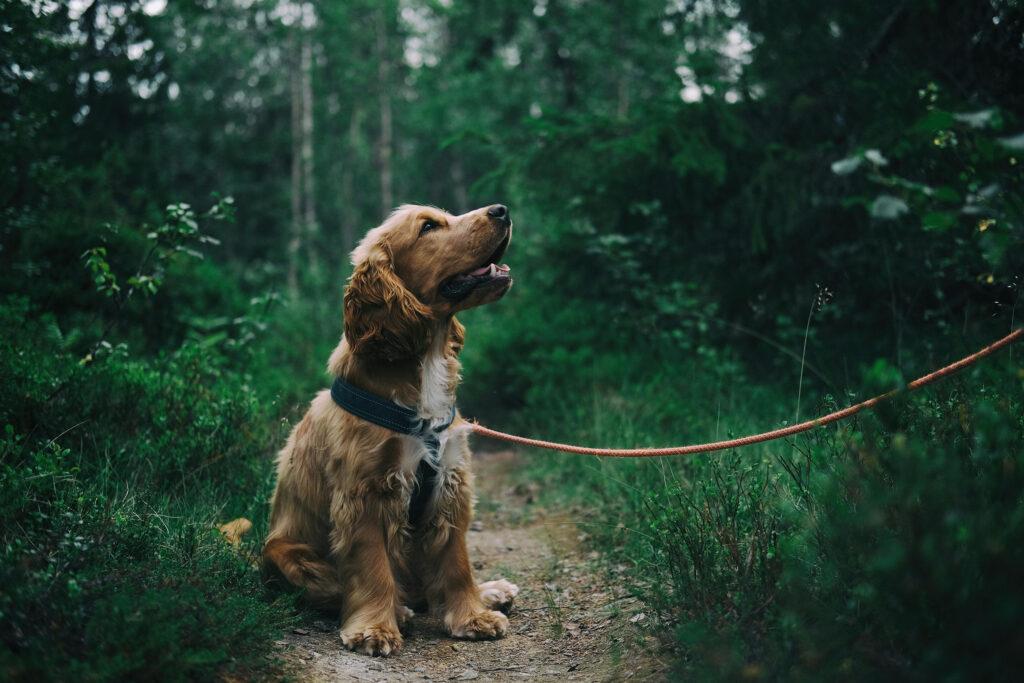
A few warnings: Longer and quicker walks may not be in your dog’s best interest if she is an exercise addict who is constantly pushing herself to go farther and faster. This could cause her to get overly excited about starting a half-marathon or footrace every time you put on her leash. Alternate her long walks with shorter ones to help her learn how to take a more balanced approach to walking while also encouraging her to sniff and look around.
On the other hand, you are probably overdoing it if your dog occasionally refuses to go on walks, lays down, or runs for home. She may be in some bodily discomfort that you are unable to identify, in which case you should speak with your veterinarian. There’s never a good reason to make your dog participate in something she doesn’t appreciate.
Beyond the ones we’ve already discussed, there might be other medical issues. When it comes to physical concerns about your dog getting too much or not enough exercise, your dog’s veterinarian is the best person to ask. Looking to purchase a Posh Dog Knee Brace or would like information on it contact us via our contact page or visit our Facebook page for more information.
While no dog enjoys having their nails clipped, all dogs may learn to tolerate the process.
Dog Nail cutting can become a stress-free part of your normal grooming regimen with a little effort. We begin by introducing you to the two main techniques for dog nail trimming and provide some troubleshooting advice. Although most dogs dislike having their nails clipped, all canines may be trained to tolerate the process with time and patience. It’s time to clip your dog’s nails if you can hear them clicking as he moves over a floor.
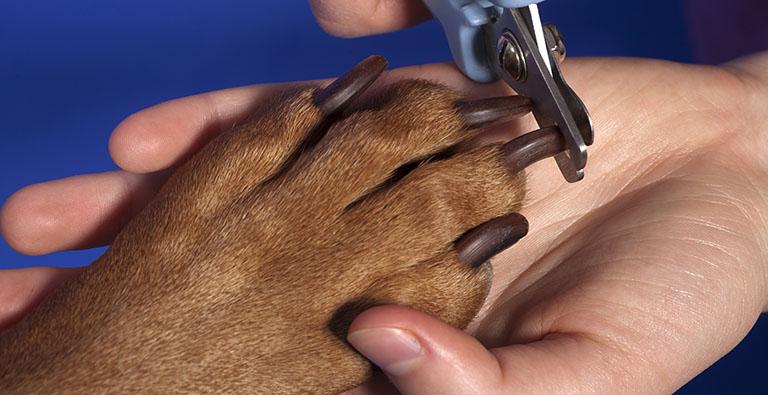
Dogs who enjoy having their nails clipped are rare. However, your dog can be progressively trained to accept having his nails clipped:
If you would like more information about our Posh Dog Knee Brace contact us via our contact form or visit our Facebook page.
Dogs undergoing physical therapy sessions can heal from wounds or surgeries more swiftly and with wider range of motion. Additionally, visiting a canine rehabilitation therapist doesn’t cost much.

Although it’s incorrect to refer to professionals who help humans as “physical therapists,” canine rehabilitation therapists offer the same services to dogs. With the increasing availability of dog physical therapy, some veterinarians have pursued post-doctoral studies in acupuncture, chiropractic, pain management, and other rehabilitation modalities.
For instance, the American Association of Rehabilitation Veterinarians (AARV) provides information on the efficacy of this method for managing pain and function loss resulting from disease or injury to veterinarians, veterinary surgeons, and pet owners. In an effort to better serve the special needs of working and athletic animals, including those with chronic conditions like arthritis and neurologic impairments, the American College of Veterinary Sports Medicine and Rehabilitation was established more recently.
Dog physical treatment typically starts with a referral to a canine rehabilitation therapist if your veterinarians do not specialize in rehabilitation themselves. These experts complete credentialing programs that concentrate on canine anatomy and physiology, common medical conditions and injuries, assessment methods, pain recognition, and rehabilitation programs to obtain credentials like CCRP (Certified Canine Rehabilitation Practitioner) and CCAT (Certified Companion Animal Rehabilitation Therapist). Among the therapies they provide are:
It’s crucial to remember that the field of canine rehabilitation treatment is evolving quickly due to the availability of new technologies and methods as well as ongoing research, which makes continuing education and staying up to date for rehabilitation therapists essential.
Dog physical therapy can be used to treat both acute and chronic diseases, much like comparable human treatments. A canine rehabilitation therapist may be able to assist with techniques, specialized equipment, and at-home exercise routines if your dog is in pain, has lost strength or flexibility, has an uneven gait or loss of balance, is recuperating from an accident, injury, surgery, or illness, or has chronic symptoms that interfere with favorite activities.
Certain therapies call for tools that you may use at home, like ramps, platforms, balance pads, cushions, and discs. Clinic consultations are necessary for other equipment, like swimming pools, treadmills for dogs, and electronic/magnetic gadgets.
In order to ensure that their dogs have comprehensive physical assessments and that the therapist can contact the veterinarian with any necessary medical treatments or diagnoses, the majority of canine rehabilitation therapists choose to collaborate with veterinarians. Meanwhile, other dog owners have put together their own teams for physical therapy, working directly with holistic practitioners such as massage therapists, chiropractors, and canine acupuncturists. Go to AHVMA.org, the website of the American Holistic Veterinary Medical Association, and select “Find a Member” to locate veterinarians who specialize in nutrition and complementary therapies that improve healing and rehabilitation.
A physical examination, which includes noting the dog’s stride, movement, structure, flexibility, strength, muscle tension, sore spots, and mobility, is the first step in seeing a canine rehabilitation therapist. The therapist will have time to get to know the dog and owner, go over the owner’s improvement and treatment objectives, and talk about the dog’s medical history and behaviors during what may be an hour-long session.
It could be beneficial to record your dog walking or moving in various directions both inside and outside as canine rehabilitation specialists concentrate on mobility and movement. Include the dates, diagnoses, and treatments of any specific illnesses, injuries, or incidents that have impacted mobility in your documentation.
The primary objective of the first visit is to create a strategy using the technology, tools, and therapies that are suitable. This frequently includes the suggestion of certain workouts to improve the muscles weakened by disease or trauma. Usually, these are made specifically for the patient to incorporate into an at-home workout regimen. Dogs that are healing from surgeries or accidents, or whose hind legs are weakening, may find that at-home exercise is very beneficial.
A follow-up plan can contain notes to distribute around family members to ensure that everyone can take part in the rehabilitation process and encourage the dog’s progress. This way, everyone in the family can help your dog heal.
Your dog’s progress will be meticulously documented by your canine rehabilitation therapist, who will also keep track of the specific therapies your dog has received, evaluate the effectiveness of rehabilitation plans, create exercise schedules that you and your dog can follow at home, schedule check-ups to record the healing process, and assess your home for any potential effects on the dog’s functional status.
Costs for veterinarian visits vary based on the type of treatment required, the therapist’s training and experience, and the location. Individual treatment sessions can cost anywhere from $50 to $100 or more, and initial consultations usually run between $100 and $200. The number of sessions needed for treatment determines the overall cost. Costs can be cut by using do-it-yourself therapies and home fitness regimens.
As long as the dog is insured prior to being sick or wounded, several pet insurance companies will pay for holistic and alternative therapies, including canine rehabilitation. For this reason, insurance specialists advise getting coverage for young, healthy dogs well in advance of the onset of any pre-existing conditions that might prevent coverage.
You understand the value of rehabilitation therapy if you have ever worked with a physical therapist following a disabling injury or illness, a broken bone, or a torn ligament. When the time comes, as an informed pet owner, you can be prepared to provide the same hands-on care for your dog by locating a canine rehabilitation therapist.
For more information on your dog physical therapy and how our Posh Dog Knee Brace helps in your dogs recovery contact us via our contact form or visit our Facebook page.
A glucosamine-chondroitin combination is the most commonly suggested joint supplement for dogs with osteoarthritis, but fish oil is not far behind.
For dogs suffering from arthritis, the majority of veterinarians advise using a supplement that blends glucosamine and chondroitin sulfate. Even as late as a study published in 2023, anecdotal evidence from veterinarians who advocate this combination is substantial, despite the fact that research is still somewhat equivocal. Natural cartilage contains chondroitin and glucosamine. Their anti-inflammatory qualities aid in pain relief, and their ability to cushion the joint relieves arthritic joints.
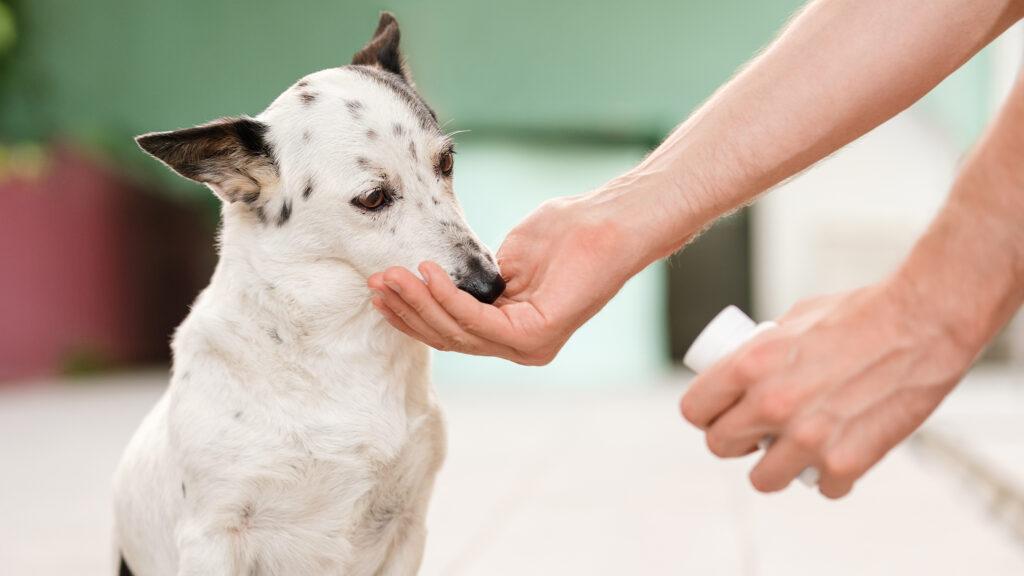
Refer to the manufacturer’s label for information on glucosamine doses. Although they are uncommon, glucosamine overdoses usually start off as vomiting or diarrhoea. Take note that the majority of products demand for a brief window of “double dosing,” often known as the “loading dose.” In a sense, it expedites the advantages. It is possible to use ordinary dosage, but the duration of the desired effects will be much greater. Observation of any change may take a month or two, even with appropriate dosage. Avoid quitting too soon.
Note: Don’t share your human vitamins with your dog; they might include dangerous substances like xylitol. Instead, choose supplements designed specifically for dogs.
Hyaluronic acid (HA) and fish oil are two other active components included in many dog glucosamine-chondroitin formulations. The most compelling evidence for fish oil’s effectiveness as a component of an arthritis therapy regimen for dogs is found in studies on the topic. Furthermore, HA has been shown in a study to have the capacity to raise synovial fluid in a joint. The oral version of HA has been demonstrated to raise synovial fluid in the joints, and it has long been used as an injectable to support joint health and relieve arthritis.
Look for the National Association of Supplement Companies (NASC) seal when selecting a glucosamine brand for your dog. This stamp attests to the product’s inclusion of the ingredients and dosages specified on the label. We would stay away from businesses without the seal.
Because arthritis develops gradually, it is not a good idea to assume that your dog has arthritis if they appear limp or sore when they move or get up. Your dog’s discomfort could be caused by a variety of issues in addition to arthritis. Never assume that a dog’s issue is arthritis, especially if the dog is elderly, or that glucosamine for dogs is a panacea. It’s not. It won’t help with conditions other than arthritis, but it will support joints that are arthritic.
Furthermore, if your dog’s discomfort is too severe for a joint supplement, he might require painkillers which are used a lot for dogs with severe arthritis.
Lastly, confirm that your dog weighs a healthy amount. Continue doing frequent, safe exercise, such as taking long walks and playing gentle games. Continue seeing your veterinarian, and let them know if you see any signs of early arthritis. The better the outcome, the earlier oral supplements like glucosamine are started for dogs. Starting joint-supporting supplements, like as glucosamine, early on, before arthritis develops, seems to offer some preventive benefits for active athletic dogs.
If you are interested in more information about supplements or one of our Posh Braces contact us via our contact form or visit our Facebook Page.
To reduce discomfort and increase range of motion, a dog chiropractor can adjust your dog’s joints.
A dog chiropractor would palpate the dog’s spine, limbs, and even the skull to look for anomalies in the way the bones join together, much like they would during a human chiropractic session. Your dog’s comfort level, nerve function, and the way that joint works can all be affected by even minor misalignments, or “subluxations.”
The subluxated joint is then adjusted and the bones are moved back into position by the dog chiropractor using precise manipulations. One common focus is the spine.
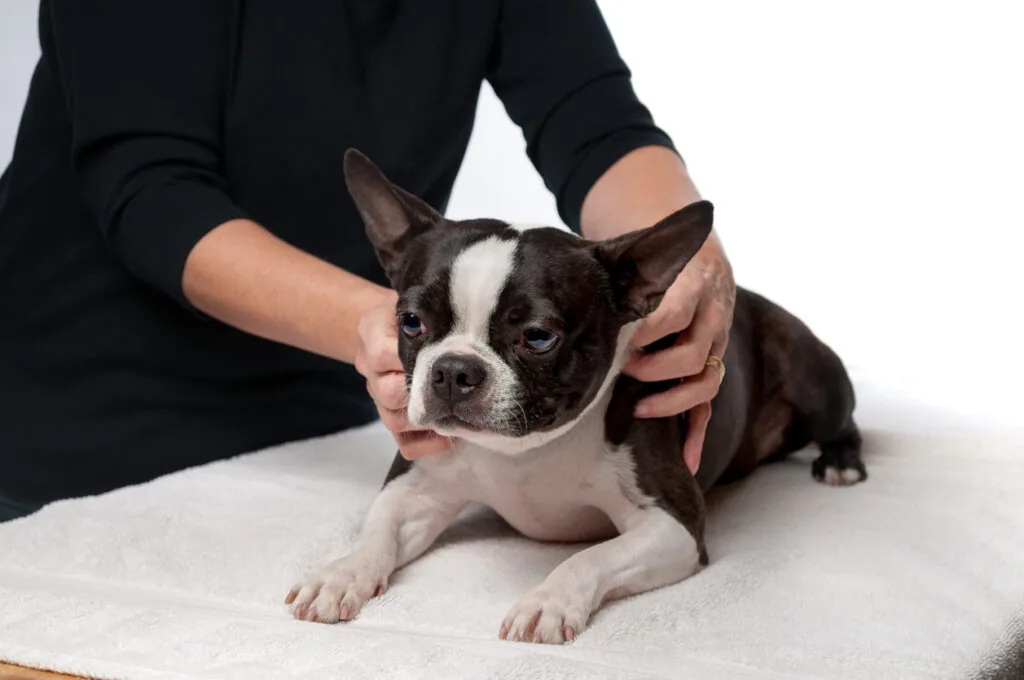
When they observe their dog limping or feeling sore all the time, most dog owners take their pets to see animal chiropractors. If your dog participates in high-impact activities like flyball or agility, you could choose to schedule a preventive dog chiropractic appointment to make sure their body is operating at peak efficiency.
Getting a veterinary diagnosis is crucial if your dog is experiencing discomfort, lameness, or lethargy. Make an appointment with your veterinarian so they can assess the cause of your dog’s discomfort or lack of self-awareness. Why does this matter? Because a variety of health issues can appear to be similar at first glance but may require quite diverse approaches to treatment. Dog chiropractic care, for instance, will help a limping dog with a sore back, but an antibiotic is necessary if the dog has Lyme disease.
If your veterinarian certifies that dog chiropractic is appropriate for your dog’s condition after you’ve determined what’s wrong, you can pursue this course of action.
Like any medical service, the price of a visit to the dog chiropractor can vary significantly based on a number of factors, including your location, the practitioner’s credentials, and your dog’s size and personality. Typically, the first appointment is between $100 and $200, and follow-up consultations are between $50 and $80.
Seek out a chiropractor with certification from the International Veterinary Chiropractic Association (IVCA) or the American Veterinary Chiropractic Association (AVCA). This guarantees that the chiropractor for dogs has received specialized training in the anatomy, joint, and spinal manipulation of dogs.
Animal chiropractic certification can be obtained by veterinarians and qualified human chiropractors holding a doctor of chiropractic (DC) degree. A human chiropractor needs specialized training to work with animals since human and canine joints and bones fit differently. It could be painful and even irreversible to try to adjust a dog in the same way that a human is adjusted.
If you are interested in a Posh Dog Knee Brace contact us via our contact form or visit us on Facebook.
When the weather is bad, a dog treadmill can come in rather handy for keeping your dog busy and content.
When your dog’s long walks aren’t feasible, such in the winter, they can get plenty of exercise on a dog treadmill. It’s important to gradually acclimate your dog to the treadmill. Make sure the treadmill belt is long enough for your dog’s stride in order to ensure their safety.
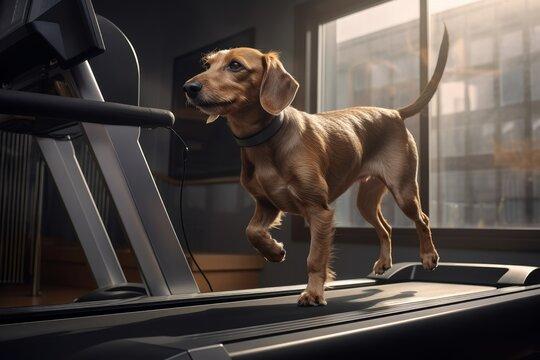
Larger dogs frequently have far longer strides than humans, although little dogs can use a human treadmill. A dog-specific treadmill is a preferable option for these huge dogs.
Train your dog on a treadmill gradually and with positivity. In order for your dog to exercise safely and effectively, you want her to feel at ease and at ease on the treadmill.
For more information about how to keep your dog healthy or how to train your dog wearing our Posh Dog Knee Brace you can contact us via our contact form or Facebook Page.
Living with dogs, particularly a new puppy, teaches you rapidly how quickly your house becomes one giant chew toy and how much, uh, mess (don’t judge) is left in every room. A inquisitive dog won’t take long to find socks and rubbish beneath the couch—oh, and look at all those interesting cords plugged in all over the place! A veritable gold mine for our dogs, who also happen to be highly dangerous.
Your house has additional opportunities to dog-proof each room. There are some unexpected dangers everywhere, from the living room and bedroom to the kitchen and laundry area. However, be at ease! Making small changes to your furnishings and décor can provide your dog plenty of comfortable space to unwind in.
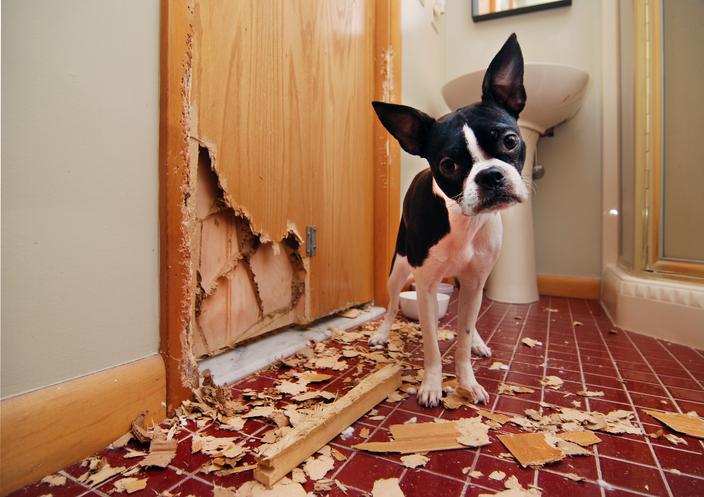
Dogs are fluffy danger vacuums on four legs because they use their noses and mouths to explore their surroundings. You are more likely to see things that could unintentionally endanger your best buddy, a dog, if you literally consider things from their perspective.
I always advise considering your dog’s perspective when assessing a room in your house for safety; what is their height and where is their line of sight? You can find dangerous items that might catch your dog’s attention by evaluating your house from their height. You may be shocked to learn that your golden retriever can easily take your brand-new watch since it is perched just right on your bedside table. Little things that are easily accessible should be taken out and stored in secure places where your dog cannot get to them, like closets or drawers.
Your end table, your bed, and your rocking rocker. If your dog is a good climber and can jump up on things quickly, you might want to remove any potentially dangerous furnishings. Jump-activated chairs have the potential to hurt your dog as well as injury other objects in your house when they swing back. Dogs who follow their noses and will put their paws up on furniture might quickly become distracted by end tables with glass picture frames or breakable family treasures.
Does your dog enjoy a nice, cozy couch spot? Is he more comfortable curled up on a blanket? Dog proofing your house requires careful consideration of where those things should be placed. Never put blankets, dog beds, or rugs next to heaters, fireplaces, fans, or electrical cords or outlets since they can easily become harmful.
The kitchen, bathroom, and laundry rooms are typically the riskiest rooms in your house, but you should spend time in every room since they can all be dangerous. To help divide up spaces or keep your dog out of areas you don’t want them to enter, get some strong baby gates. Your dog will have lots of wonderful spots to rest and unwind once you’ve made these sections of your house safe.
There are a lot of things in kitchens that aren’t dog friendly, like food, medicine, and cleaning materials. Your dog has the greatest opportunity to discover and eat objects that are not appropriate for them. However, kitchens may make excellent doggie hangouts once they are dog-proofed.
Electrical cords, fireplaces, open windows, and recliner chairs are the most frequent issues in living rooms. Since your dog will probably spend the most time in this room with you, it is crucial to make sure it is secure for them.
A dog’s favorite spot to search for intriguing treats to sample and entertaining “toys” to try is usually the bathroom. The greatest method to exercise effective management is to keep cabinets closed, and even better, to keep the bathroom door closed.
Dogs are frequently kept in protected places like bedrooms. Make sure to take out anything that could choke your dog and don’t leave anything out that you’d prefer not to become a chew toy before using your bedroom as a place for them to unwind.
Curious dogs might encounter numerous hazards in laundry facilities. While some risks are more overt, others are more covert. When in doubt, keep the washing room off-limits.
Dogs should never be left unattended outside, but if you do allow your dog to go outside for bathroom breaks through a doggie door in the backyard, make sure the area is secure and safe. Dogs that are bored can easily escape through holes, loose posts, and unlatched gates; therefore, it is important to supervise them whenever they are near pools or play equipment.
Our dogs quickly locate comfortable places in any home and are excellent adapters when we assist them in doing so in a secure manner. For the sake of your dog and to make sure they are comfortable and safe when you are not there, make sure your home is dog-safe.
If you are interested in a Posh Dog Knee Brace contact us via our contact form or visit our Facebook Page.
Pets that support you emotionally and enhance your health are called therapy dogs. To help both yourself and other people, you can teach your dog to be a therapy dog.
Dogs used for therapy reside in homes. They can also visit a range of locations, such as schools, hospice homes, hospitals, retirement or assisted living facilities, and schools. They have been educated to tolerate being petted or hugged by strangers and to be kind and amiable. When kids pull at their fur or when grownups want the younger ones to sit on their laps, they are understanding and unfazed.
One kind of therapy animal is the therapy dog. Additional animals that can provide emotional support include horses, llamas, alpacas, cats, bunnies, and birds.
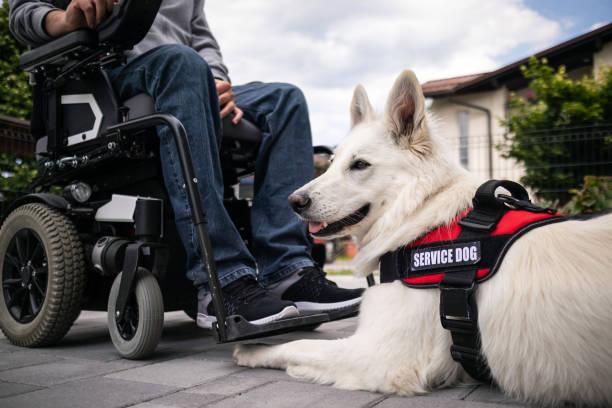
Although they’re not the same as therapy dogs, service dogs are something else entirely.
*The ADA does not protect therapy dogs, sometimes known as emotional support animals.
Service Animals and Emotional Support Animals, ADA National Network, 2014. They therefore lack the same rights as their owners to join them in restricted public areas unless prior authorization is granted. To offer some constructive comfort treatment, the therapy pet needs to be welcomed onto the property.
It is commonly recognized that therapy dogs can help with a variety of mental health issues and psychiatric problems.Interaction with therapy dogs and other companion animals is beneficial for patients with a variety of diagnoses, including depression, bipolar disorder, autism, ADHD, post-traumatic stress disorder (PTSD), and Alzheimer’s disease.
Therapy dogs can also assist with physical health issues that may be the cause of emotional difficulties. Empirical evidence indicates that individuals undergoing animal-assisted therapy may experience reduced pain during their convalescence following challenging surgery or a severe accident. According to studies, these connections can lower the stress hormone cortisol and raise the hormone that improves mood, oxytocin.
With a little instruction, any amiable breed of dog can become a therapy dog. Larger breeds are frequently utilized as therapy dogs, including Labradors, St. Bernards, standard poodles, and golden retrievers. On the other hand, when the patient and the dog are sharing a confined space, smaller breeds like Pomeranians and micro poodles make sense.
Although the breed may have some influence on the dog’s pleasant nature, the dog’s upbringing and even temperament development play a major role. Dogs are evaluated and studied for how they react to various stimuli, including unexpected grabs, loud or confusing noises, and even equipment like wheelchairs or canes, before they are approved as therapy animals.
Many internet directories are available if you would want additional information about how to find a therapy dog to aid you or a loved one. To identify people and organizations in your area, search for “therapy dog” along with the name of your town or city online.
Do an internet search for “therapy dog training” along with the name of your town or city to find out what options are available if you’re interested in finding out more about training your dog to be a therapy dog or visiting nursing homes or other facilities with your pet. Or just contact the facility of your choice by phone or email to find out about their admission policy.
For more information about therapy or our Posh Dog Knee Brace you can contact us via our contact form or Facebook Page.